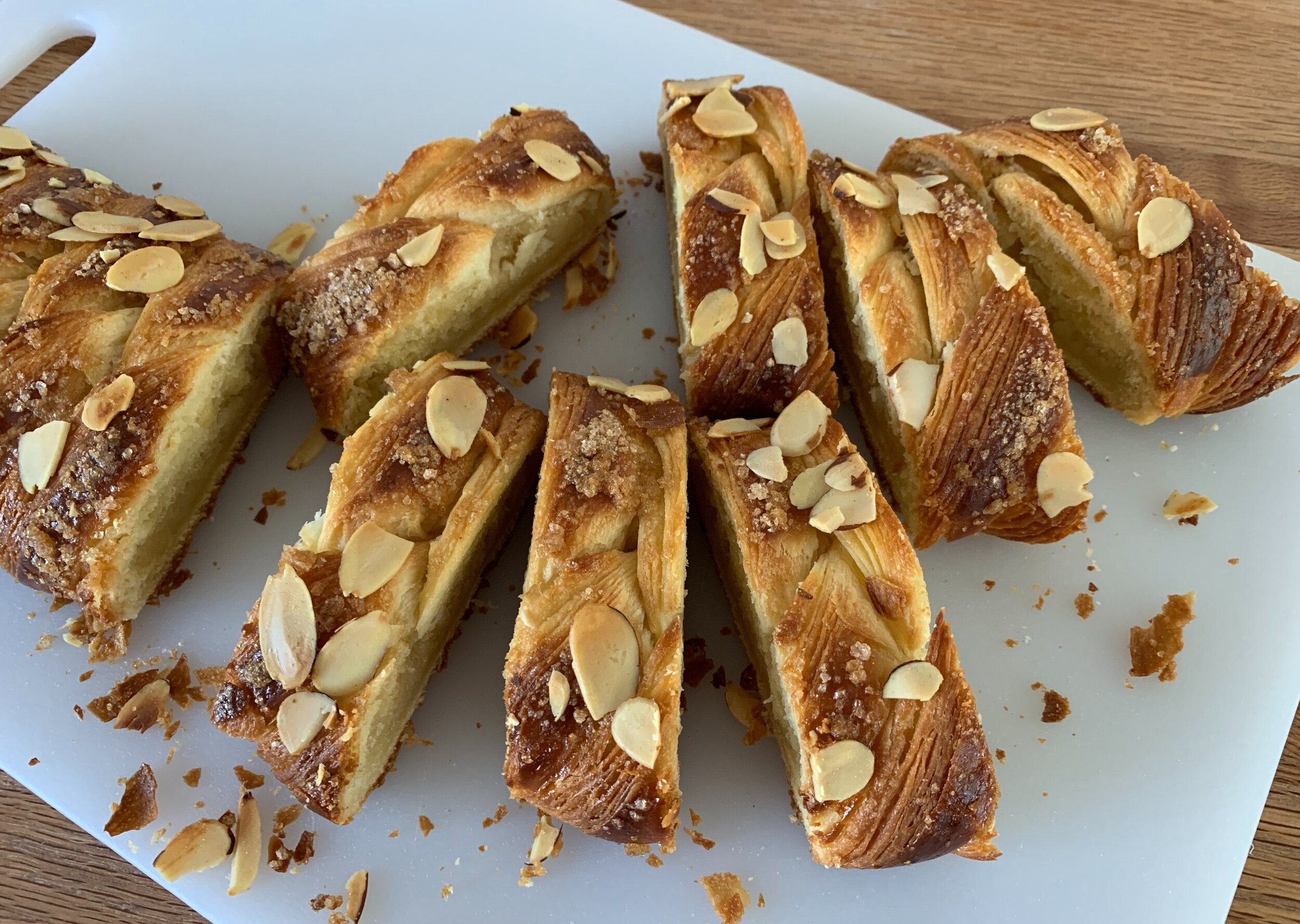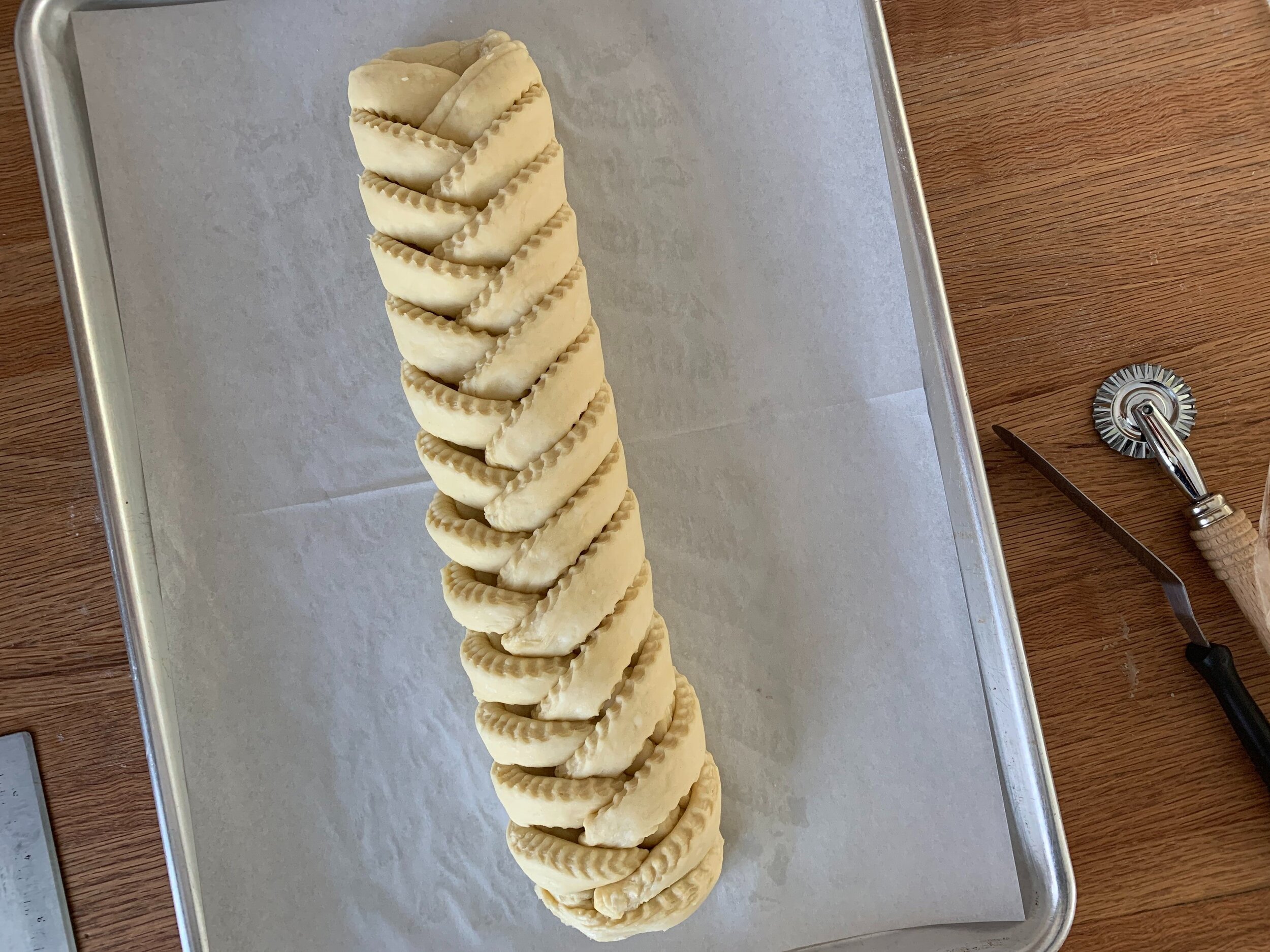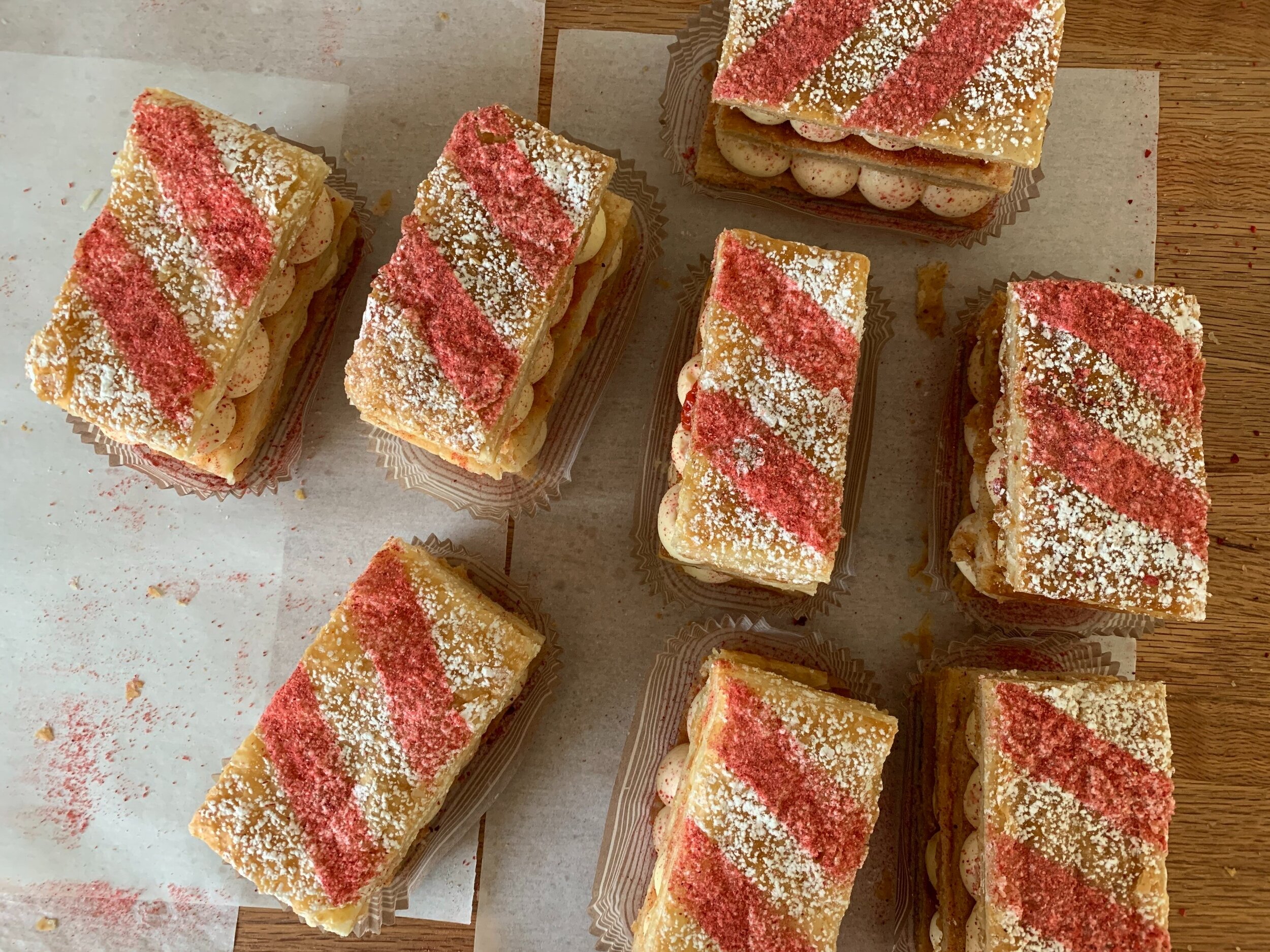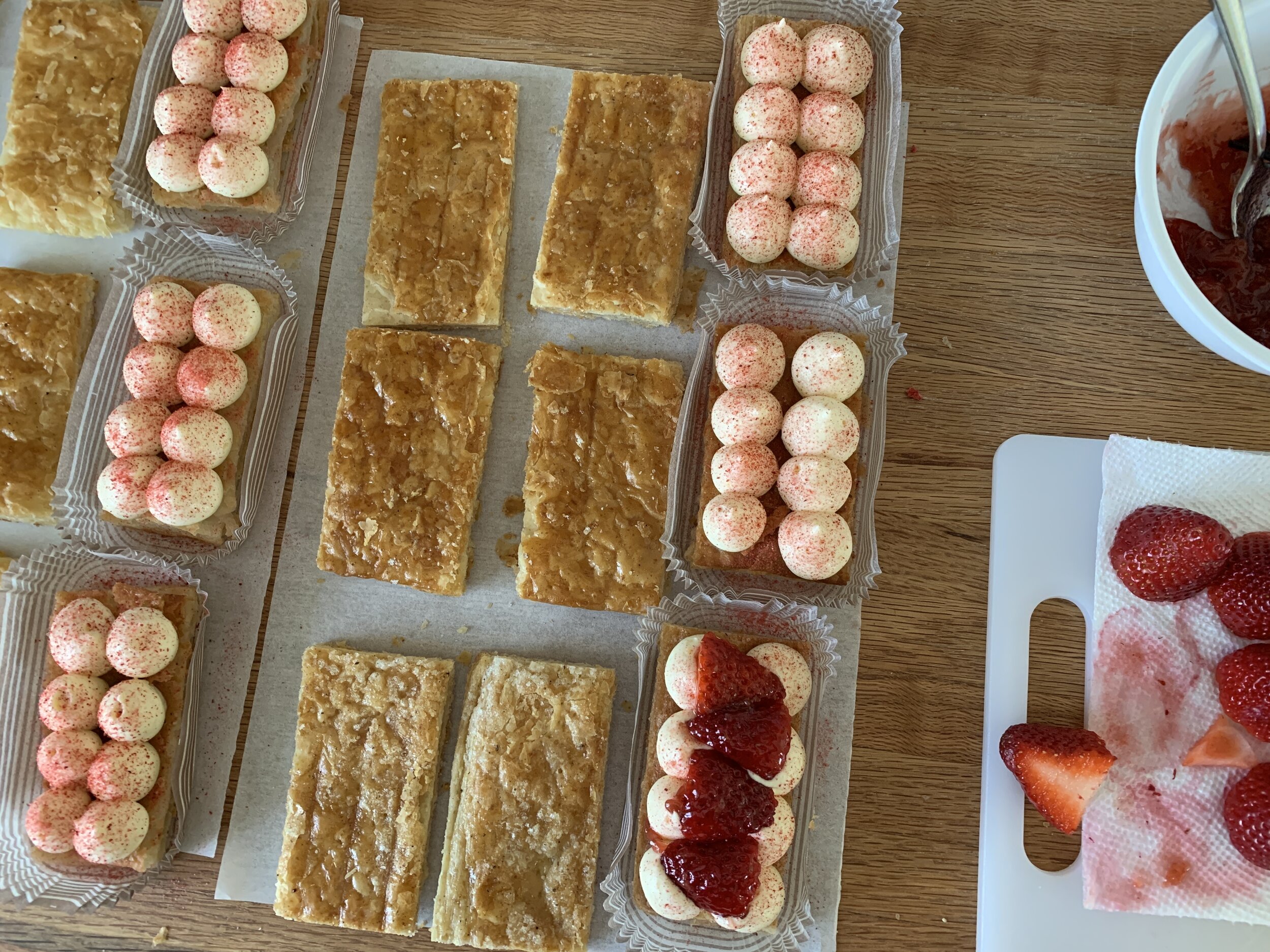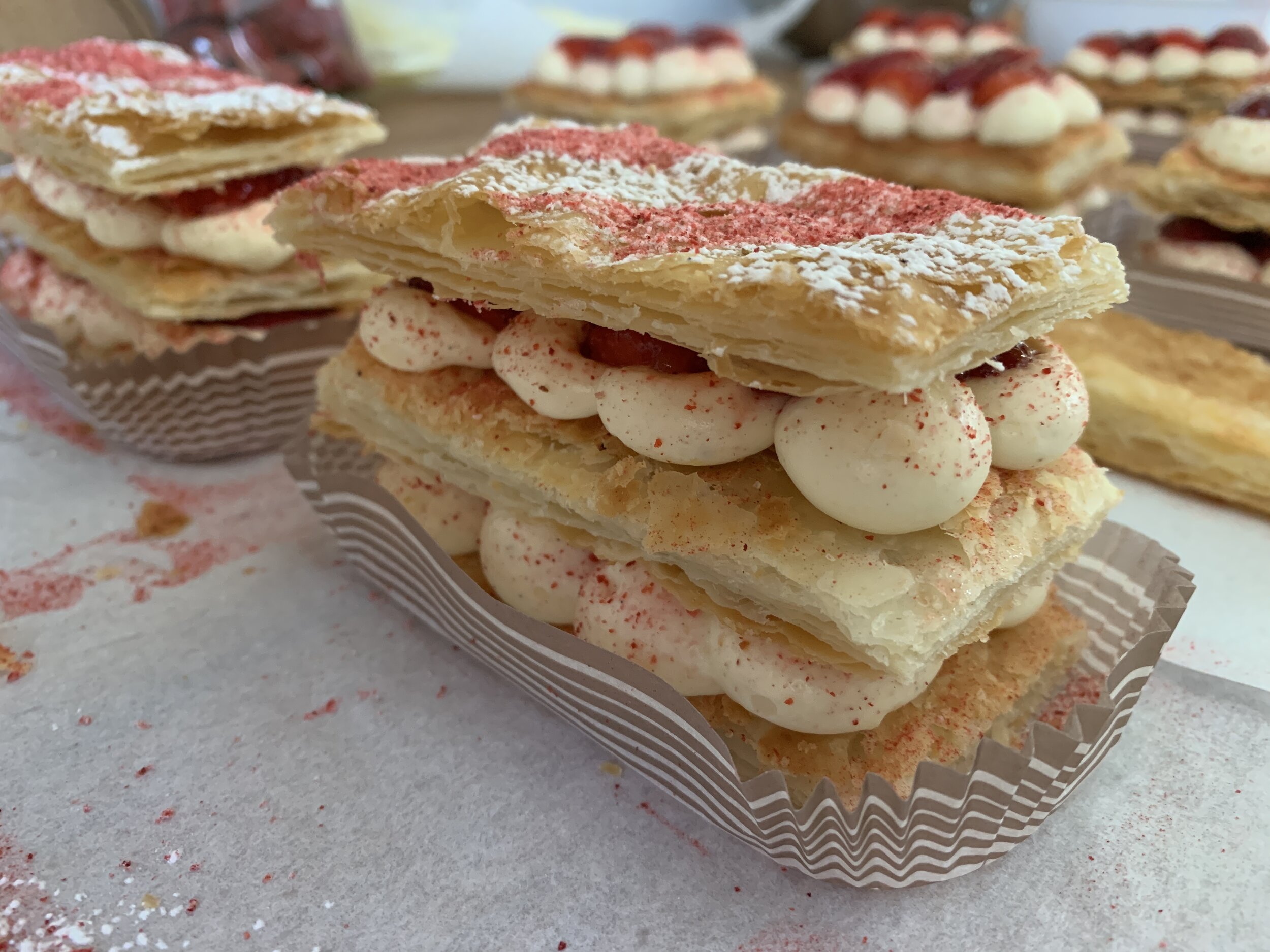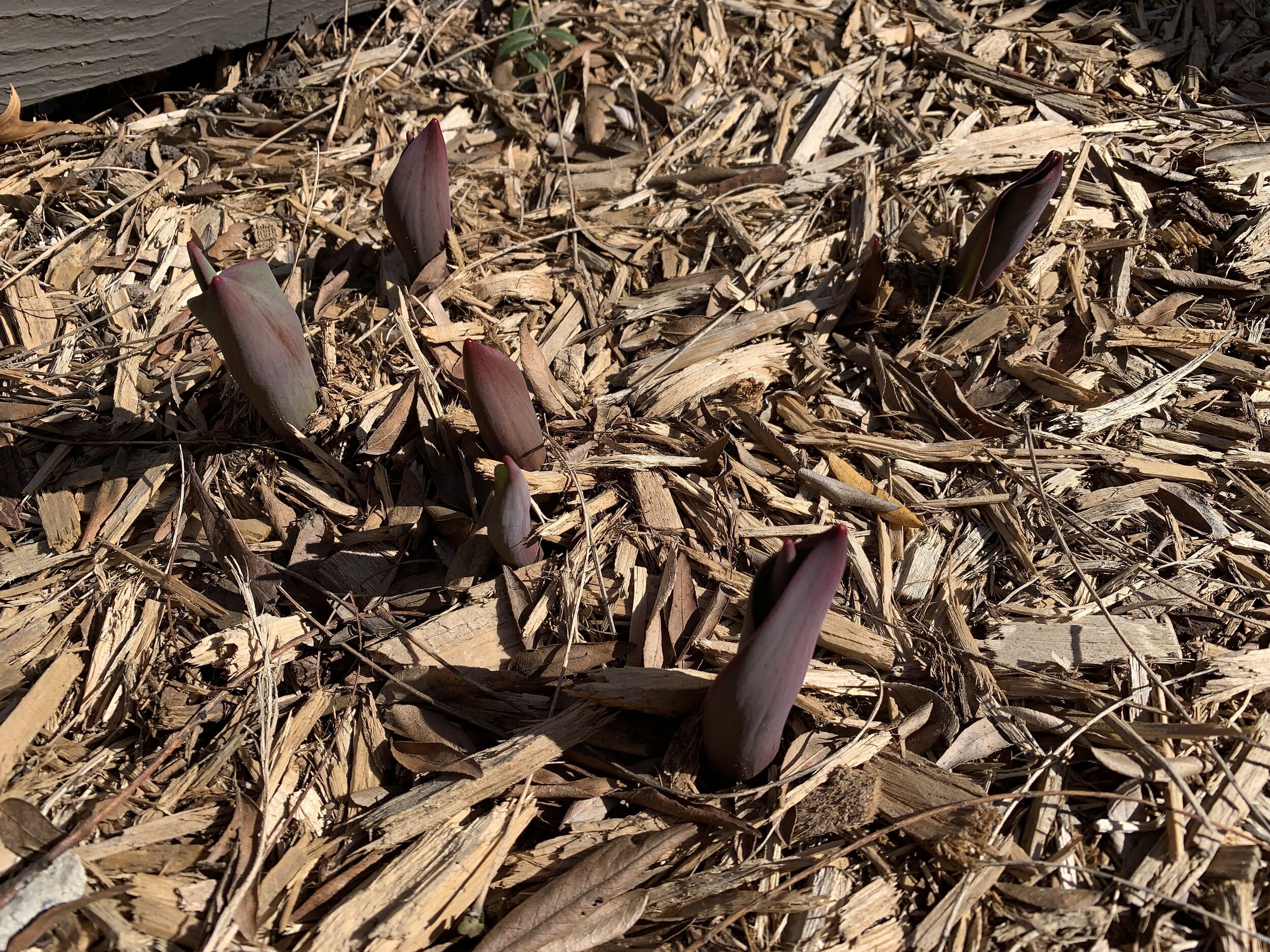Danish almond braids
/It’s time for more Danish dough fun!
After I posted on Danish Kringle last spring, I knew I would return to this laminated dough and the wonderful things that can be made with it. I’ve been spending more time with Beatrice Ojakangas’ book “The Great Scandinavian Baking Book” (let’s call it TGSBB) and continue to be amazed at the array of dough and almond filling recipes she presents. Whoa.
I made two versions for this project so as to compare recipes from Ojakangas (BO) and one from Melissa Weller’s (MW) recently published book “A Good Bake”. She refers to it as her “laminated babka dough”. Their recipes are similar to mine although with variations in the amounts of sugar, egg and butter as well as how much butter is used in both the dough and the butter block. So many options in the baking world!
Here’s one of my favorite ways to compare recipes - hand written columns to show you just a few of the differences one might discover when researching different Danish (or any!) recipes. You see my recipe vs. the other two as well as the adjustments I made to those two noted in (parentheses). You can use the same mixing/kneading approach for all three - just look here. Each recipe is enough for two braids.
Almond braid No. 1 (BO)
Almond braid No. 2 (MW)
Before we delve into the braid steps let’s talk briefly about almond paste. In my recent post on Bakewell tart, I mentioned frangipane and almond cream as commonly used fillings for baked fruit/jam/almond tarts. But almond paste is a biggie when it comes to making fillings for many pastries, particularly in Scandinavia and The Netherlands.
You may see the terms almond paste and marzipan mentioned in various recipes, some of which use the terms interchangeably. Technically they aren’t the same. Typically paste is at least equal parts ground almonds and sugar, with higher quality pastes (my preference) having an even higher percentage of almonds (e.g 66% almonds to 34% sugar). Marzipan is more often used for modeling and molding, available in an array of colors (or create your own), and is generally higher in sugar (e.g. 33% almonds to 67% sugar).
I’ve been using Mandelin premium almond paste for a while now (they have several “levels” of paste which are well described on their site). I’ve also been buying my blanched almond flour and sliced almonds from them too. Great stuff.
For the almond filling (enough for two braids) cream 56 g soft unsalted butter with 100 g confectioners sugar; blend in 1 teaspoon almond extract (I reduce that to 1/4 teaspoon since my premium almond paste has some bitter almond extract in it already), 100 g almond flour (or finely ground almonds), 85 g almond paste and 1 large egg white until smooth.
The process of forming this braid (not a real braid, truth be told) is what I find so pleasing - it speaks to my simple artistic bent and is so satisfying once completed. The braid in the following images is with MW’s dough.
Start with about 600 g of your finished laminated Danish dough and roll it out to a rectangle of about 9”x 15”. Have your filling ready to go.
As seen in the image above, make light marks (don’t cut!) along the length to create three sections then cut the two outer sections at 45º angles about every inch or so. I find using 2 bench scrapers works well so you can match the cuts up as you work your way down. Cool!
The almond filling goes right down the center. Remember you’re using a half recipe per braid. Here’s a tip - place the filling in a rough log shape in plastic wrap, use a rolling pin to lightly compress and shape it to the size of the dough center, keeping it in the plastic. Then gently turn it out of the wrap right onto the dough center. That way you don’t have to spread the filling directly on the dough and risk some smooshing of the laminated layers beneath. Call me crazy!
Now start folding the strips across the center, alternating sides, to create a faux braid until you reach the bottom. Tuck the ends under.
Almost there!
Got it!
Place the shaped pastry on a parchment lined sheet pan. Cover lightly with plastic wrap and let proof about 60 minutes until puffy. It won’t double but you should appreciate more prominence of the layers.
Just for comparison here’s an image of my first go at this with my version of BO’s recipe. I used a fluted pastry wheel to cut the sides to give it that certain je ne sais quoi, but my fold over pieces weren’t all quite long enough as I reached the end. That experience helped me pay closer attention to my cuts/strip lengths for the MW version.
While proofing, heat the oven to 350ºF (Weller’s version). I generally leave my baking stone on the bottom rack of my oven. Even if I’m not baking directly on it, I feel it helps keep the oven temp more even.
Egg wash, sprinkle sliced almonds and raw sugar or crushed raw sugar cubes on top, place on a second sheet pan (helps to protect the bottom from burning) then onto the center rack and bake about 30-40 minutes until nicely browned.
For BO’s version heat the oven to 400ºF and bake about 15-20 minutes. Below is the baked version of BO’s - you can see how the fold over pieces pulled away, particularly at one end, exposing the filling. Still tasted good!
Let’s taste! Slicing into BO’s version, there’s a hint of doughiness to the bottom layers. The almond filling is deelish, although, in spite of the lovely flaky, golden and crisp exterior, Steve and I thought the pastry seemed a bit on the dry side and needed a touch more salt to punch up the flavor. The laminated layers are clearly seen (this one went through two 4-folds).
BO version
For MW’s version there was no doughiness at all to the bottom, and the top laminated layers look pretty good (this one went through only two 3-folds). The flavor of the pastry married with the almond-y filling is wonderful!! A big thumbs up.
MW version
Based on this project, I’ve tweaked my base recipe (NOTE the links above are for this tweaked recipe): hike up the sugar to 90 g, increase the butter in the dough to 113 g and make my butter block 227 g for a total butter of 340 g all told. I’ll stick with two 4-folds for my laminating for now but will most likely play with that too from batch to batch. The almond filling is a keeper for sure!
In the meantime stay healthy, remain prudent and enjoy spring! Aaahh, so beautiful.


